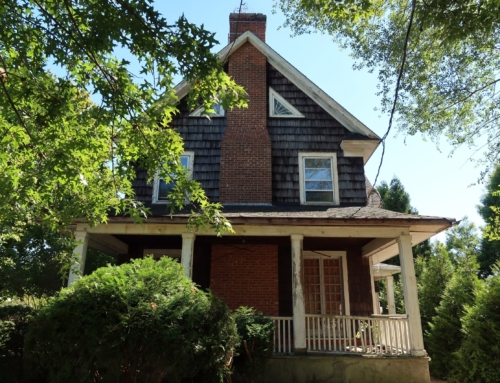 Q: My husband and I purchased our first home in 2011.The home is a four-story town house located in Washington, DC. First built in the 1880s, it has had many owners and updates.
Q: My husband and I purchased our first home in 2011.The home is a four-story town house located in Washington, DC. First built in the 1880s, it has had many owners and updates.
After purchasing the home and living in it, we notice the home shakes every time a truck drives down the street. The home is four stories tall and has a basement. If we slam the door, the second floor shakes. The seller was a real estate agent and had the home for several years. He did not disclose this and now we think the home has serious and costly structural problems. The shaking just isn’t normal. Do we have any recourse?
A: Unless you know that the home has serious and costly structural problems, you probably don’t have much to complain about. You knew you were buying a home from the 1880. It’s about 130 years old and is still standing. When the home was built, there were only horse drawn carriages going down the street and now you have trucks that are many tons in weight going down your street. It’s probably been shaking the way it is now since trucks have been going down the street.
Presumably, you had a home inspector come to the home and go through the home before you purchased the home. And, if the home inspector did not find any deficiencies in the construction, you decided to go forward and buy the home.
The only way you’ll know for sure if you have structural problems with the home is if you hire a structural engineer to go over the construction of the home. But just because you hire a structural engineer and he or she finds that the home is not built to today’s standards does not mean that the home is deficient. The structural engineer will have to find that there has been some recent or new deficiency in the structure that is causing the shaking problem.
Even if you find out that there is a deficiency in the home, shaking alone may not constitute a sufficient problem for the seller to know that the home had a deficiency that needed to be disclosed to you.
If you find out that there is a way to make the problem better by installing additional supports or taking other action to fix the problem, you can then see what the cost will be to take that corrective action. But taking that action may be like improving the home and not a true fix to a deficiency that needed to be disclosed to you.
If you buy a home that is older and some of the elements of the home have aged and have become weak, the seller would have to disclose to you a problem the seller knows has come about. If the seller knew, for example, that a center beam of your home was cracked and deteriorated and could fail at any time, it would seem that the seller should disclose that to you. But if the roof of a home is old, but is not leaking and you move into the home and it then starts leaking, you can’t blame the seller for the leak or for the cost of replacing an old roof. You knew the roof was old and an old roof can start leaking at any time.
You have to take responsibility for your own actions and the purchase you decided to make. You need to review the situation, get some expert advice from one or more people that are familiar with homes like yours, assess what, if any, corrective action must be taken, and then talk to an attorney about your issue when you have all of this information. For example, talk to your neighbors who live in homes of similar age. Do their homes shake when a truck drives past?
If the fix to your problem is relatively inexpensive, you may want to fix the problem and move on. If the fix is quite expensive, then you may have to investigate the problem more and then determine whether any disclosure laws were broken and whether the seller would have any liability for non-disclosure.
Tell us how things end up once you gather more information.






Leave A Comment